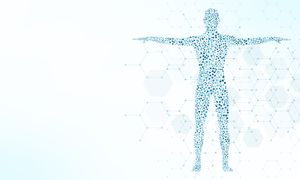KANBrief 3/23

BioMath GmbH has been tasked by KAN with examining the current state of research into interfaces and data formats for digital human models and motion capture systems.
Digital models and methods are used in occupational safety and health to plan and assess products and processes. Digital human models simulate physical aspects of work. Systems also exist that use coordinates of human joints to record movements in three-dimensional space; these data can then be fed into a digital human model. Experts use this model to identify measures for safe and healthy workplace design.
Enterprises and research institutes alike possess methods and tools with which data from digital human models and motion capture systems can be analysed, assessed and presented. These are often standalone applications, incompatible with each other owing to their different data formats. Since the 1960s, some 150 different digital human models have been developed for various purposes. (Not all are still in use.)
Standardizing the interfaces would be advantageous for occupational safety and health, as it would enable a more robust body of data to be generated, from which measures for human-centric work design could be created. The interfaces concerned are:
Standardized interfaces and data formats would facilitate the merging of kinematic data from multiple sources and their use for generic evaluations.
In the course of a KAN project, BioMath GmbH identified and reviewed research publications dealing with digital ergonomics. The aim was to highlight findings concerning human factors relating to digital human models and the digital capture, evaluation and presentation of kinematic data that can be considered validated.
The report provides an overview of digital human models and descriptions of their characteristics and capabilities. The study shows that digital human models retrieve anthropometric data from different databases representing different population groups. In some cases, the databases differ widely in how they group the data or break it down. The quality of the data is decisive for the quality of the digital human models.
The study also analysed what motion capture systems have already been examined in studies. The primary focus here lay on the scope for data interchange. The study revealed that no uniform procedure for this exists at present.
Points to be examined in greater detail by future research projects should therefore include the following:
The project contractor has summarized the results of the survey in a report describing the current situation and approaches to harmonizing interfaces and data formats. The content of the report is to be published in the form of a DIN/TR technical report. For this purpose, KAN will prepare the text and submit an application to DIN. The long-term objective is to develop generic standards for digital human models, interfaces and data formats. In KAN's view, however, full harmonization of the requirements is not possible at the present time.
Katharina von Rymon Lipinski
vonrymonlipinski@kan.de